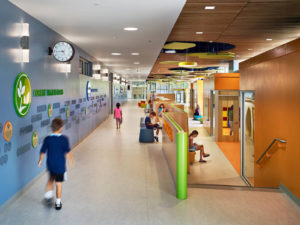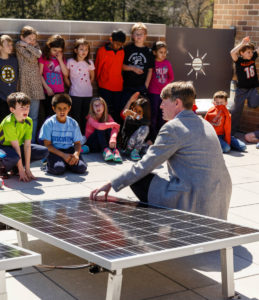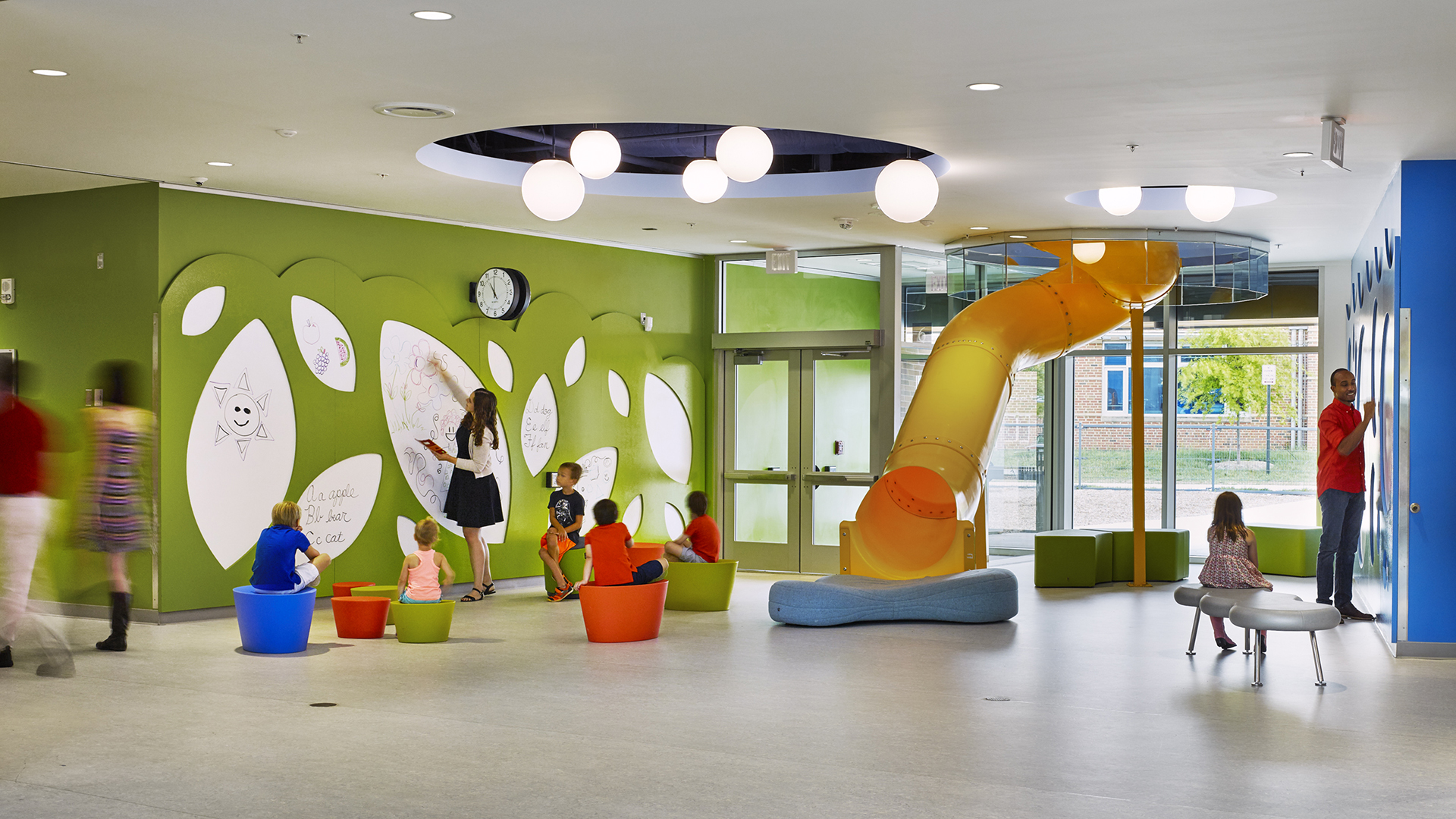Discovery Elementary School in Arlington, Virginia, has earned the 2021 Livable Building Award from UC Berkeley’s Center for the Built Environment. A program jury from CBE’s building industry consortium lauded how the “purposeful design of the building supports students and teachers by creating a diverse learning environment with seemingly endless ways to engage students,” and also how the sustainable features of the building are used in the school’s curriculum. The project is one of the first certified zero-energy schools nationwide, and represents the second school project by VMDO Architects to earn this annual recognition. Additional images, links and details about the school’s design and technical details are explained on the web page for the 2021 Livable Buildings Award.
This award program is unique as projects only qualify by getting high marks as measured by CBE’s Occupant Survey, which assesses aspects of indoor environmental quality from the perspective of building users. Wyck Knox, a principal with VMDO, led his team of architects along with numerous consultants during the multi-year planning and design effort. He says that a school that opened in Kentucky in 2010 was the first to achieve net-zero energy, and it inspired the team to set an ambitious goal of zero-energy performance. “Remember this was back in 2012 when we started, so we were not sure if that school was a one-off, or a demonstration project that was not repeatable, but it showed we can try new things and make it work,” he explains.

The central corridor features environmentally themed graphics and and a rich array of spaces for individual and group learning.
The award jury appreciated the way that the building’s sustainable features are showcased through an extensive environmental graphic design program that flows through hallways and into classrooms. “Not only does it integrate climate-positive and resilient solutions, it also teaches students the value of these solutions through active participation and engagement,” noted one juror. A large infographic in the building entry notes the many design features that together contribute to the energy performance. These features include micro-zoned heat pumps coupled with a geothermal system, a fully electric kitchen, and exterior walls constructed using insulated concrete forms, which provide thermal mass, high levels of insulation and low air infiltration.
The project reached its zero-energy goal within the standard school budget for similar schools, at $333 per square foot, without relying on power purchase agreements frequently used to reduce the initial costs for photovoltaic systems. Knox remembers his conversation with the school district’s director of design and construction about pursuing a ZNE goal, “I asked that as long as we don’t ask for money, can we do this? He said, ‘absolutely.’ It worked because the client never said no, they supported us taking this risk.” The success with Discovery Elementary School has also had an impact on VMDO’s goals for future projects, helping to remove barriers to zero-energy goals and experimentation with new products and methods.

Wyck Knox of VMDO Architects of explains the rooftop photovoltaic system to students.
Knox also credits the successful outcome in part to the close collaboration with the community and school leadership. Erin Russo, who had been assistant principal for the co-located middle school, was appointed principal and hired a full year before the school opened, and the strong relationship between designers and educators helped maximize the building as a tool for learning and to be a healthy environment. “Most new schools under design don’t yet know who the principal will be, so you miss the opportunity to integrate, and to get buy-in on the notion that the built environment can facilitate a variety of modes of teaching and learning that may not have been possible in older buildings,” he explains.
The school has been in operation now for seven years, and Principal Erin Russo has given tours to people from around the world who have come to see the school. She says that the VMDO team “really gets design from the child’s perspective. It comes through in everything they do, they care about the children and the teachers.” She also praises the architects’ frequent visits to the school well after the project was complete, for example, showing teachers how to teach about the solar oculus in the school’s entry canopy, how to configure the furniture, to explain the building to new teachers, and they have also come back to gather fresh ideas from students for future projects.
Russo notes one revealing episode, only days after the school’s opening, when a broad power loss forced many local schools to drastically change procedures. However, due to the Discovery School’s design features — with ample daylight, operable windows and thermally stable construction — she initially had not even noticed the power loss, and teachers were able to proceed without problems. The same features that provide energy savings also provide resilience to power losses.
In addition to this winning project, the jury considered these other finalists that also got high marks from the occupant survey, and that demonstrate many sustainable features: American Society of Landscape Architects, Washington DC, Arup Offices, Seattle WA and the Gorecki Alumni Center, Grand Forks, ND.
CBE thanks this year’s esteemed award jury for their participation: William Frantz, Senior Principal Scientist at Armstrong World Industries; Michael Hedrick, Senior Engineer at McKinstry; Isabelle Lavedrine, Business Development Consultant at CPP Wind Engineering Consultants; Jon Mohle, Senior Product Manager at Clark Pacific; and Sarah Wicker, Principal and Director of Research at CallisonRTKL.

